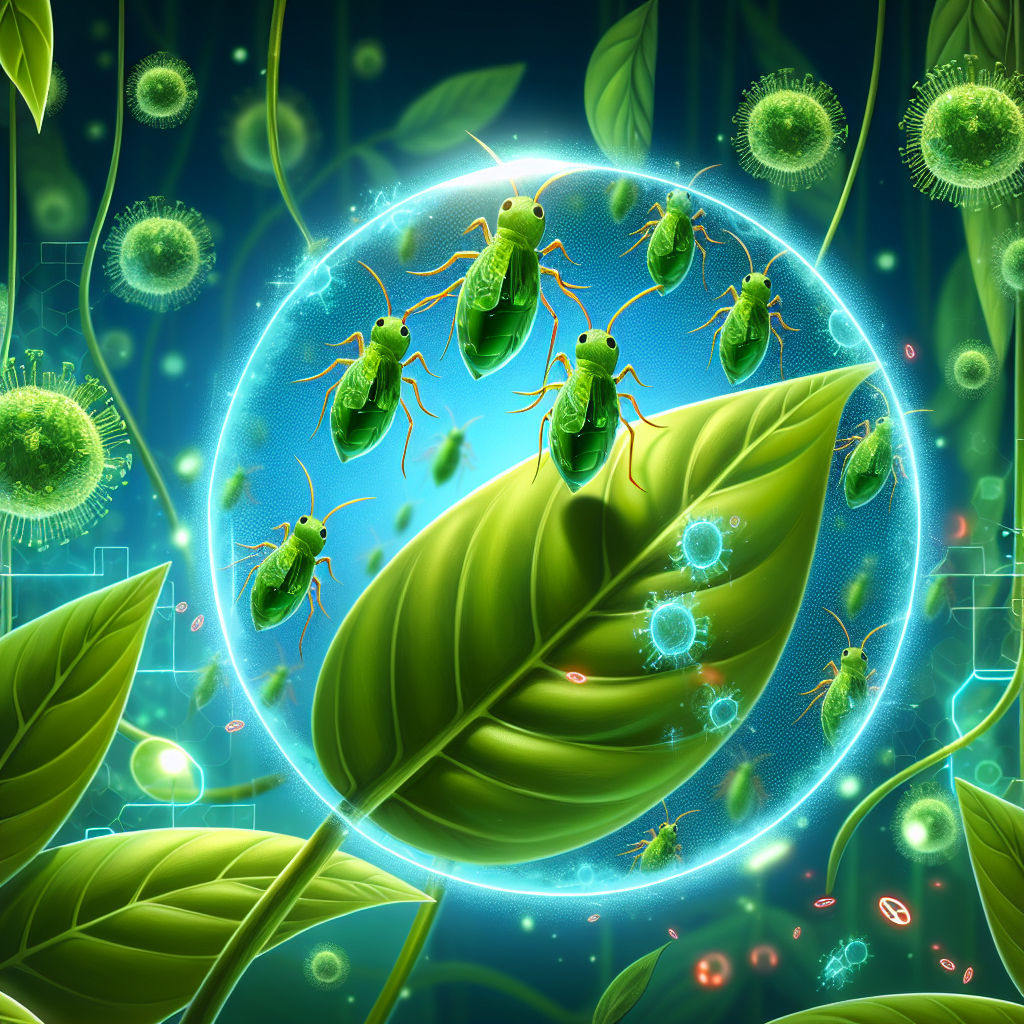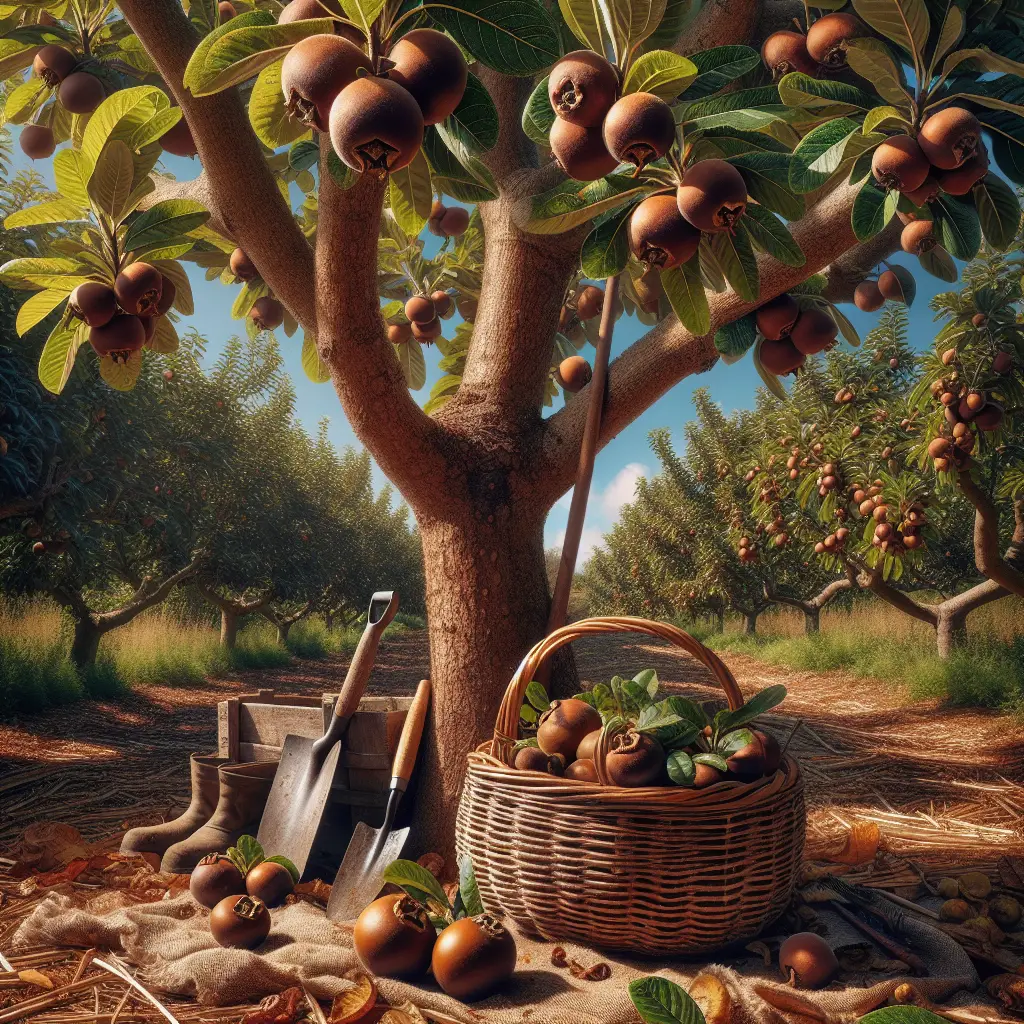Caring for Nectarine Trees for Sweet Fruits
Updated May 1, 2024 at 8:01 am

Introduction to Nectarine Tree Care
- Climate Suitability – Nectarine trees thrive in a warm temperate climate with plenty of sunshine to sweeten the fruits.
- Soil Requirements – They prefer well-drained, fertile soil with a slightly acidic to neutral pH level.
- Watering Needs – Consistent watering is crucial, especially during the fruiting period, to ensure juicy and plump nectarines.
- Pest and Disease Management – Monitor for common pests and diseases, employing timely organic or chemical treatments as necessary.
- Pruning and Thinning – Regular pruning promotes healthy growth and air circulation; thinning the fruit allows for larger and better-quality nectarines.
Choosing the Perfect Spot for Your Nectarine Tree
Just starting out with your nectarine tree journey? One of the first steps towards luscious fruits is choosing the right location.
You might be pondering where to plant your new nectarine tree—and it’s a valid concern. This tree loves the sun and requires plenty of it to bear those sweet treats you’re looking forward to.
Soil Preparation and Planting Techniques
After picking the perfect sunny spot, it’s time to roll up your sleeves and prepare the soil.
Ensuring the right soil conditions is not something you’d want to overlook. Nectarines need well-drained soil to prevent root rot. It’s been said that many gardeners advocate adding organic matter to enrich the soil and ensure a potent mix of nutrients for optimal tree growth.
Watering: A Delicate Balance
Once your nectarine tree is comfortably settled in its new home, you’ll need to think about water. Not too much, not too little—the Goldilocks principle applies here.
Imagine biting into a nectarine and savoring that burst of flavor—that’s what proper watering can help you achieve. Keep an eye on rainfall and supplement with deep watering during dry spells, especially as the fruit sets and matures.
Pruning: The Secret to Bountiful Harvests
Pruning isn’t just a chore, it’s an art. It’s about carving out the future of your tree. Done correctly, it opens up the tree canopy to sunlight and air—essential elements for fruitful yields.
Try to picture the sunlight filtering through the branches; this ensures that your tree stays healthy and the fruits can ripen evenly. People often speak highly of pruning shears like the Fiskars Steel Pruning Shears for their durability and precision, making the job much easier.
Find This and More on Amazon
Fertilizing: Timing and Technique
Feeding your nectarine tree is not about dumping a load of fertilizer at the base and hoping for the best. It’s about understanding what your tree needs at different stages of its growth.
Typically, a balanced slow-release fertilizer applied in early spring gives the tree a nutritional head start. You might also hear recommendations for fertilizers like Jobe’s Organics Fruit & Citrus Fertilizer with Biozome, which is often praised for its organic composition and effectiveness.
Pest and Disease Management
Now let’s talk about protecting your hard work from pesky invaders and ailments. It’s disheartening to see insects and diseases take a toll on your tree.
Keep an eye out for signs of stress or nibbles from insects. Organic options, like neem oil sprays, are popular among gardeners for dealing with such issues without resorting to harsh chemicals. In addition to acting as a pest repellent, neem oil is said to help with fungal diseases, which are common in nectarine trees.
Thinning the Fruit for Size and Quality
You’ve done everything right and now you’re rewarded with an abundant set of young fruits. But wait, don’t celebrate just yet. Thinning is the next crucial step.
By removing excess fruit early on, the remaining nectarines have space to grow larger and sweeter. Many veteran gardeners swear by this method and emphasize its impact on the harvest’s overall quality.
Harvesting: Picking at Peak Sweetness
Finally, the moment of truth: harvest time. The culmination of all your efforts is ripe for the picking—literally.
To ensure you’re getting the sweetest fruits possible, wait for the nectarines to reach their peak color and give slightly when gently squeezed. The anticipation makes the first bite all the more rewarding.
Common Problems You Could Encounter
Even with all the right practices, you could run into some hiccups. Perhaps the fruit isn’t sweetening up, or you’re noticing curled leaves that signal peach leaf curl—a common disease among stone fruits.
It’s important to stay vigilant and react promptly to any signs of trouble. Regular monitoring and some TLC can get your nectarine tree back on track should it falter.
Winter Care: Protecting Your Tree
When the colder months roll in, don’t think your nectarine tree doesn’t need your attention. Frost can be a silent killer for the delicate buds that’ll become next year’s fruit.
Leveraging frost protection techniques, such as using burlap wraps or even frost cloths, can go a long way in safeguarding your tree. These can be found at local garden centers or online, with many gardeners sharing their preferences for certain brands and types, highlighting their usability and effectiveness.
Long-Term Health: Annual Checkups and Adjustments
Just like you go for an annual checkup, so should your nectarine tree. It’s not just about addressing current problems; it’s about preventing future ones.
Take note of the tree’s growth, the soil’s condition, and any changes in the surrounding environment. Adjustments in care throughout the tree’s life can lead to many years of fruitful harvests.
A Recap of Caring for Your Nectarine Tree
To sum it all up, caring for your nectarine tree involves a series of thought-out steps and preventative measures, from selecting the right location to dealing with pests and diseases, to ensuring winter protection.
Embrace each stage with patience and dedication, and your nectarine tree will be a source of sweet and juicy fruits for years to come. Remember, the effort you put into caring for your tree is directly proportional to the joy of harvest. Happy gardening!
Organic vs Chemical Fertilizers for Nectarine Trees
Gardening enthusiasts often debate between using organic versus chemical fertilizers. Lets consider how each affects the health of your nectarine tree.
Organic fertilizers, such as compost or manures, release nutrients slowly and improve soil structure. Chemical fertilizers provide immediate nutrients but can, over time, cause soil degradation. Many hobbyists respect brands like Espoma for their range of organic products that support sustainable cultivation practices.
Understanding Nectarine Tree Diseases
Becoming familiar with diseases specific to nectarine trees helps preempt damage.
Peach leaf curl, bacterial canker, and brown rot are some ailments to watch for. Applications of copper-based fungicides and good cultural practices are lauded for their preventive abilities by many online reviews. However, always follow the guidelines to avoid overuse, which could harm the ecosystem in your garden.
Mulching: The Unsung Hero in Nectarine Tree Care
A layer of mulch is often overlooked, yet it’s an unsung hero in tree care.
It regulates soil temperature, retains moisture, and suppresses weeds, decreasing the need for frequent watering and weeding. Cedar mulch is a favorite among gardeners for its pleasant aroma and pest-repellent properties.
Supporting Your Nectarine Tree with Stakes and Ties
Young, heavily fruiting, or wind-swept trees might need additional support.
Staking and tying can prevent breakage and promote upright growth. Stakes should be sturdy, like the ones made by Vigoro, and ties must be flexible enough to not damage the tree while holding it securely.
Addressing Nutrient Deficiencies in Nectarine Trees
Yellow leaves or poor growth may indicate a nutrient deficiency.
Soil tests help identify the missing elements. If the soil lacks iron, for instance, products like Ironite Mineral Supplement are often recommended in reviews for their efficiency in correcting chlorosis.
Attracting Pollinators to Your Nectarine Trees
Good pollination is key to fruit production in nectarine trees.
Creating a pollinator-friendly environment with diverse flowering plants can entice bees and other pollinators to your garden. Hand pollination is an alternative if natural pollinators are scarce. Little extras like bee houses can also make your garden more inviting to these vital insects.
Overcoming Pollination Challenges
Sometimes, despite your best efforts, trees still struggle with pollination.
When natural pollination is insufficient, consider attracting mason bees with bee attractants or houses, which are favorites for their non-aggressive nature and effective pollination. Mason Bee House by Niteangel, for instance, gets excellent reviews for its design that appeals to these native pollinators.
Using Growth Regulators to Improve Fruit Set
In some cases, fruit set might be poor even with proper care.
Growth regulators such as Gibberellic acid can be used to improve fruit set in nectarine trees, although it should be applied judiciously, following the instructions thoroughly for the best results.
Integrating Companion Planting in Your Orchard
Companion planting can play a beneficial role in your nectarine tree’s health.
Planting garlic or marigolds around the base can help repel certain pests. Reviewers also commend companion planting for its ability to enhance biodiversity and soil health, ultimately benefitting the nectarine trees.
Calculating the Age of Your Nectarine Tree
Determining the age of your nectarine tree helps tailor your care approach.
Trees have different needs at different stages of their lives, and knowing the age can guide pruning intensity and watering schedules. While growth rings are a common age indicator, for living trees, you can estimate age by measuring the trunk diameter and consulting growth charts specific to nectarine varieties.
Gauging the Success of Your Nectarine Harvest
At the end of the season, assessing your harvest’s success is important.
Evaluating fruit quantity, size, sweetness, and overall tree health offers insights into what worked and what might need adjustment for next year. Fruit size gauges, like the ones from INSIZE, help standardize measurements and benchmark against previous years.
Expanding Your Orchard: Planting More Nectarine Trees
Feeling successful with one tree and considering adding more?
Understanding cross-pollination and variety compatibility is critical before expanding your orchard. Consulting with local nurseries or experienced gardeners can provide valuable insights on which varieties grow well together and the best planting strategies.
Engaging with the Gardening Community
Joining gardening communities, both local and online, can enrich your horticultural journey.
Sharing experiences, gleaning tips from others, or even attending workshops can broaden your knowledge. Not to mention, communities offer moral support that can be just as important as practical advice.
Giving Back: Sharing Your Nectarine Harvest
Finally, sharing your bounty with friends, family, or local food banks can be incredibly rewarding.
Giving back not only spreads joy but also fosters a sense of community. It’s a beautiful way to close the gardening cycle, from nurturing your nectarine tree to enjoying the fruits of your labor and sharing them with others.
Integrating Smart Technology for Precision Nectarine Tree Care
Taking advantage of technological advancements in gardening can help you care for your nectarine trees more efficiently.
From soil sensors that alert you to moisture and nutrient levels, to apps that track growth and remind you of care schedules, technology can be a powerful ally. The Plant Monitor Smart Soil Checker, for example, is commended for giving real-time feedback on soil conditions, helping you tailor your tree care to its exact needs.
Preserving Your Nectarine Fruits for Year-Round Enjoyment
Want to savor the taste of your sweet nectarines even out of season? Preserving your harvest is the answer.
From canning and freezing to drying, each method has its own set of techniques for best results. Home canning kits, like those made by Ball, are popular for their ease of use, enabling you to store your nectarine fruits safely and enjoy them anytime.
Creating Shade and Sun Protection for Tender Nectarines
While nectarine trees love sunlight, too much direct heat can affect fruit quality.
Strategically creating shade with netting or cloth during the hottest part of the day can prevent sunburn on the fruits. Be sure to choose materials that allow airflow, like the UV-resistant garden netting from Easy Gardener, which is praised for reducing heat stress without stifling the tree.
Responsible Waste Management: Composting Tree Trimmings
Being environmentally responsible with your nectarine tree care includes waste management.
Composting pruned branches and fallen leaves not only reduces waste but also returns nutrients to the soil. Compost bins, such as the Envirocycle Composting Tumbler, receive high marks for making the composting process simple and effective, turning garden waste into gold for your nectarine tree.
Choosing the Right Tools for Nectarine Tree Care
Quality tools make the demanding job of caring for fruit trees significantly easier.
Investing in reliable brands like Corona for pruners, rakes, and spades can make a difference in your gardening experience. These tools are often highlighted in reviews for their ergonomic design and lasting sharpness, deemed essential for any serious gardener.
Reflecting on the Rewards of Nurturing Nectarine Trees
Raising nectarine trees from planting to harvest is a labor of love that brings many rewards.
As you watch your trees flourish and taste the sweet fruits of your labor, you’ll understand that the care and dedication invested in these trees is worth every moment spent under their leafy branches.
Shop more on Amazon

